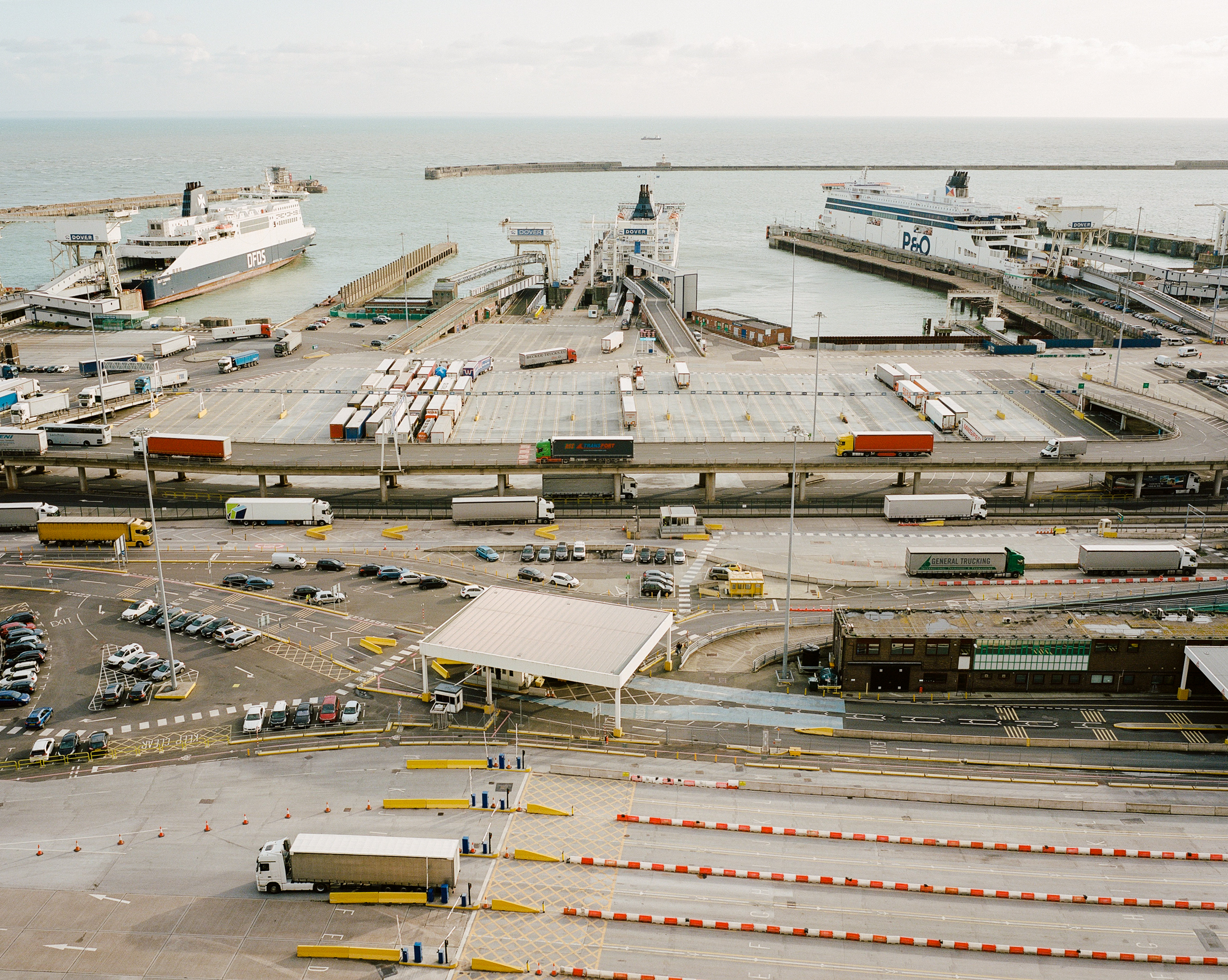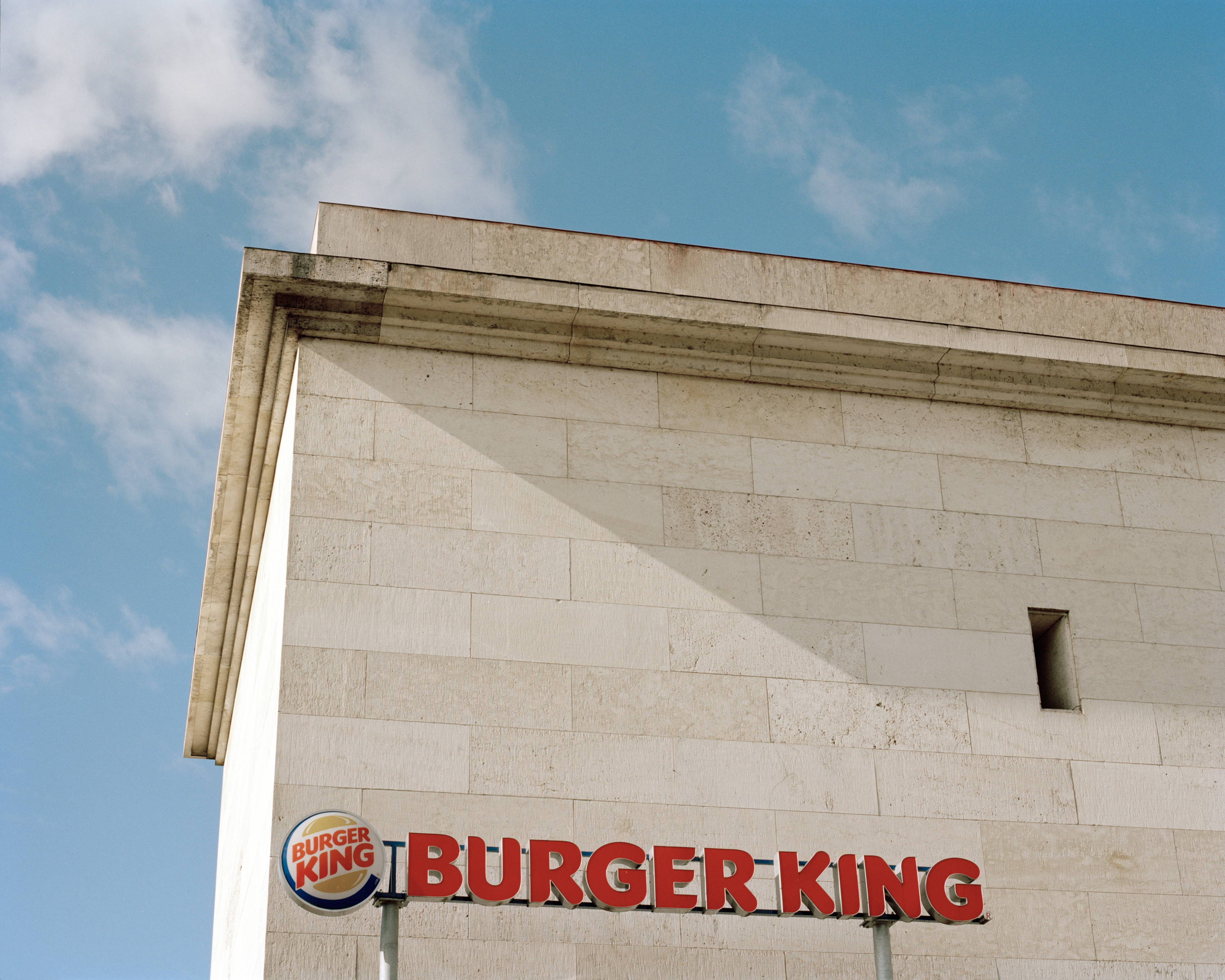Photography





Interregnum
2022
Shot during the period of National Mourning following the death of Queen Elizabeth II, this series looks at the public response to the loss of the Monarch. Along with the spectacle of century-old traditions and ceremonies, the passing of the Queen prompted a moment of national introspection, raising questions around Britain’s past and future, along with a mix of pride, grief and nationalism.
2022
Shot during the period of National Mourning following the death of Queen Elizabeth II, this series looks at the public response to the loss of the Monarch. Along with the spectacle of century-old traditions and ceremonies, the passing of the Queen prompted a moment of national introspection, raising questions around Britain’s past and future, along with a mix of pride, grief and nationalism.






Atomic Priesthood
In Production
In Production
An ongoing project Atomic Priesthood aims to examine the issues of deep–time and long–term communication presented by nuclear energy.
Since the advent of the nuclear age an ever increasing stockpile of radioactive waste is being produced. Currently there is no way to treat this waste and so it must be stored safely until it is no longer hazardous. Unfortunately the timescales involved in nuclear energy dwarf human comprehension, with some high–level nuclear waste remaining hazardous for up to a hundred–thousand years.
Safely storing radioactive waste and communicating the danger of the stored waste represents an unparalleled challenge when one considers the temporal nature of human language and culture. This field, know as Nuclear Semiotics, has produced some bizarre solutions to the issue of long–term communication including glowing radioactive cats, secretly coded plants and an ‘atomic priesthood’.
Safely storing radioactive waste and communicating the danger of the stored waste represents an unparalleled challenge when one considers the temporal nature of human language and culture. This field, know as Nuclear Semiotics, has produced some bizarre solutions to the issue of long–term communication including glowing radioactive cats, secretly coded plants and an ‘atomic priesthood’.
In 1984 the U.S department of Energy commissioned a report entitled ‘Communication Methods to Bridge Ten Millennia’. According to the report’s author Thomas Sebok, the most effective technique for communication across long periods of time are messages transmitted through religion and folklore. Sebok suggests ‘piggy–backing’ the message of nuclear waste locations onto an existing religion whilst entrusting the full information to a select group of scientists to safeguard and relay to the next generation. – in Sebeok’s words an ‘Atomic Priesthood.’
Inspired by Sebeok’s proposal Atomic Priesthood explores long–term communication prevailing folklorish rituals and their meaning – with a view to imagine how today’s nuclear infrastructure could be seen in the future.
Inspired by Sebeok’s proposal Atomic Priesthood explores long–term communication prevailing folklorish rituals and their meaning – with a view to imagine how today’s nuclear infrastructure could be seen in the future.
Onkalo film test excerpt
Finland, 2020.
Onkalo, five hundered meters beneth the small island of Olkiluoto in Western Finland. Currently the only facility in the world dedicated to the permanent storage of high–level nuclear waste.
Finland, 2020.
Onkalo, five hundered meters beneth the small island of Olkiluoto in Western Finland. Currently the only facility in the world dedicated to the permanent storage of high–level nuclear waste.











Channel
In progress
The English Channel and its associated history has played a significant part in forming notions of national identity and sovereignty.
Channel explores the histories that populate this landscape, how these histories are remembered and the roles they play in shaping ideological and political thought.
In progress
The English Channel and its associated history has played a significant part in forming notions of national identity and sovereignty.
Channel explores the histories that populate this landscape, how these histories are remembered and the roles they play in shaping ideological and political thought.
Don Quixote
2015
Published by Visual Editions
Designed by Fraser Muggeridge
Commissioned by Visual Editions, photography illustrating Don Quixote's fictional journey across modern day Spain.
2015
Published by Visual Editions
Designed by Fraser Muggeridge
Commissioned by Visual Editions, photography illustrating Don Quixote's fictional journey across modern day Spain.
Visual Editions commissioned this series of photographs to Illustrate Miguel de Cervantes 1605 novel Don Quixote.
Don Quixote is a local elderly nobleman fallen on hard times in La Mancha, Spain. Quixote is driven mad through obsessively reading books on chivalry. This obsession leads Quixote and his squire Sancho Panza to embark upon a quest to win the heart of local farm girl Dulcinea.
The pair journey across Spain. Their everyday adventures appear to Quixote interwoven with the chivalric exploits of his books, where there is an Inn Quixote sees a castle and windmills become giants.
Don Quixote is a local elderly nobleman fallen on hard times in La Mancha, Spain. Quixote is driven mad through obsessively reading books on chivalry. This obsession leads Quixote and his squire Sancho Panza to embark upon a quest to win the heart of local farm girl Dulcinea.
The pair journey across Spain. Their everyday adventures appear to Quixote interwoven with the chivalric exploits of his books, where there is an Inn Quixote sees a castle and windmills become giants.
To illustrate Don Quixote extensive research was made to retrace the fictional journey of Don Quixote and Sancho Panza along with finding additional locations that could represent Quixote’s interpretation of his surroundings. This process culminated in a Quixotic road trip across Spain searching for chivalric romance in the landscape.
Don Quixote is avalible here
Don Quixote is avalible here
























On a Knife Edge
2015
Photographs for the feature documentry On a Knife Edge, directed by Jeremy Williams.
Set against a background of rising tension and protest, a Lakota teenager learns firsthand what it means to lead a new generation and enter adulthood in a world where the odds are stacked against him.
2015
Photographs for the feature documentry On a Knife Edge, directed by Jeremy Williams.
Set against a background of rising tension and protest, a Lakota teenager learns firsthand what it means to lead a new generation and enter adulthood in a world where the odds are stacked against him.
The documentry On a Knife Edge follows George Dull Knife’s coming of age on the Pine Ridge Reservation over a five year period from thirteen to eighteen.
The Dull Knifes are a Lakota Sioux family renowned in Native American lore. Chief Dull Knife (George’s three-times great grandfather) fought alongside Crazy Horse at the battle of Little Bighorn in 1876, defeating Colonel Custer. By the end of the ‘Indian Wars’ after capture and persecution the Dull Knifes escaped to make a perilous journey towards their homelands in the North. Eventually they settled on what would come to be the Pine Ridge Reservation in South Dakota.
Taken during the last week of five years filming this series of photographs portray the events leading up to the 125th anniversary of the Wounded Knee massacre. Wounded Knee is commemorated by Native Americans for two events. The first event came in 1890 with the horrific massacre of several hundred Lakotan people including 250 women and children by the U.S Army. The second event in 1973 was the 71 day occupation of Wounded Knee by activists and members of the American Indian Movement (A.I.M). The occupation was in response to corruption and abuse of powers by the then Tribal government and the failure of the U.S government to honour its treaties with the Native American people.
The Dull Knifes are a Lakota Sioux family renowned in Native American lore. Chief Dull Knife (George’s three-times great grandfather) fought alongside Crazy Horse at the battle of Little Bighorn in 1876, defeating Colonel Custer. By the end of the ‘Indian Wars’ after capture and persecution the Dull Knifes escaped to make a perilous journey towards their homelands in the North. Eventually they settled on what would come to be the Pine Ridge Reservation in South Dakota.
Taken during the last week of five years filming this series of photographs portray the events leading up to the 125th anniversary of the Wounded Knee massacre. Wounded Knee is commemorated by Native Americans for two events. The first event came in 1890 with the horrific massacre of several hundred Lakotan people including 250 women and children by the U.S Army. The second event in 1973 was the 71 day occupation of Wounded Knee by activists and members of the American Indian Movement (A.I.M). The occupation was in response to corruption and abuse of powers by the then Tribal government and the failure of the U.S government to honour its treaties with the Native American people.
Seen as an emblem of both historic and contemporary injustice of the treatment of Native American people the anniversary of Wounded Knee is marked by a massed march and ceremony every year.
In the weeks prior to anniversary of the Wounded Knee massacre, there were a series of protests and meetings as the result of a racist incident at a minor league hockey game in Rapid City. Children from a school in the Pine Ridge Reservation attended the game as a reward for academic achievement. At the game a group of white men seated in a corporate box above the children poured beer on them and shouted racial slurs. Protests incited by this incident are depicted in the series above.
On a Knife Edge can be seen here.
In the weeks prior to anniversary of the Wounded Knee massacre, there were a series of protests and meetings as the result of a racist incident at a minor league hockey game in Rapid City. Children from a school in the Pine Ridge Reservation attended the game as a reward for academic achievement. At the game a group of white men seated in a corporate box above the children poured beer on them and shouted racial slurs. Protests incited by this incident are depicted in the series above.
On a Knife Edge can be seen here.








Ruin Value
2013
Edited by Billie Muraben
Designed by Marie Matheron
Ruin Value seeks to examin the fraught history and reconciliation of Nuremberg’s architectual legacy.
2013
Edited by Billie Muraben
Designed by Marie Matheron
Ruin Value seeks to examin the fraught history and reconciliation of Nuremberg’s architectual legacy.
The debate of whether Germany’s complex history should be preserved is an important one, loaded, even generations past NS rule, with problematic repercussions.
Ruin Value refers to the policy of borrowing an architectural grandeur from the ancient world, but designed to fall rapidly into a state of elegant decay to create an aesthetic myth of prevailing national socialism.
Ruin Value refers to the policy of borrowing an architectural grandeur from the ancient world, but designed to fall rapidly into a state of elegant decay to create an aesthetic myth of prevailing national socialism.
Ruin Value documents these monuments and how they are preserved. Shot in two locations in Nuremberg, Ruin Value captures the former NS rally grounds and the city's courthouse, where many leading figures of the NS regime were later tried, including Albert Speer, the architect of the grounds.






Excerpts from Ruin Vaule, 2013.